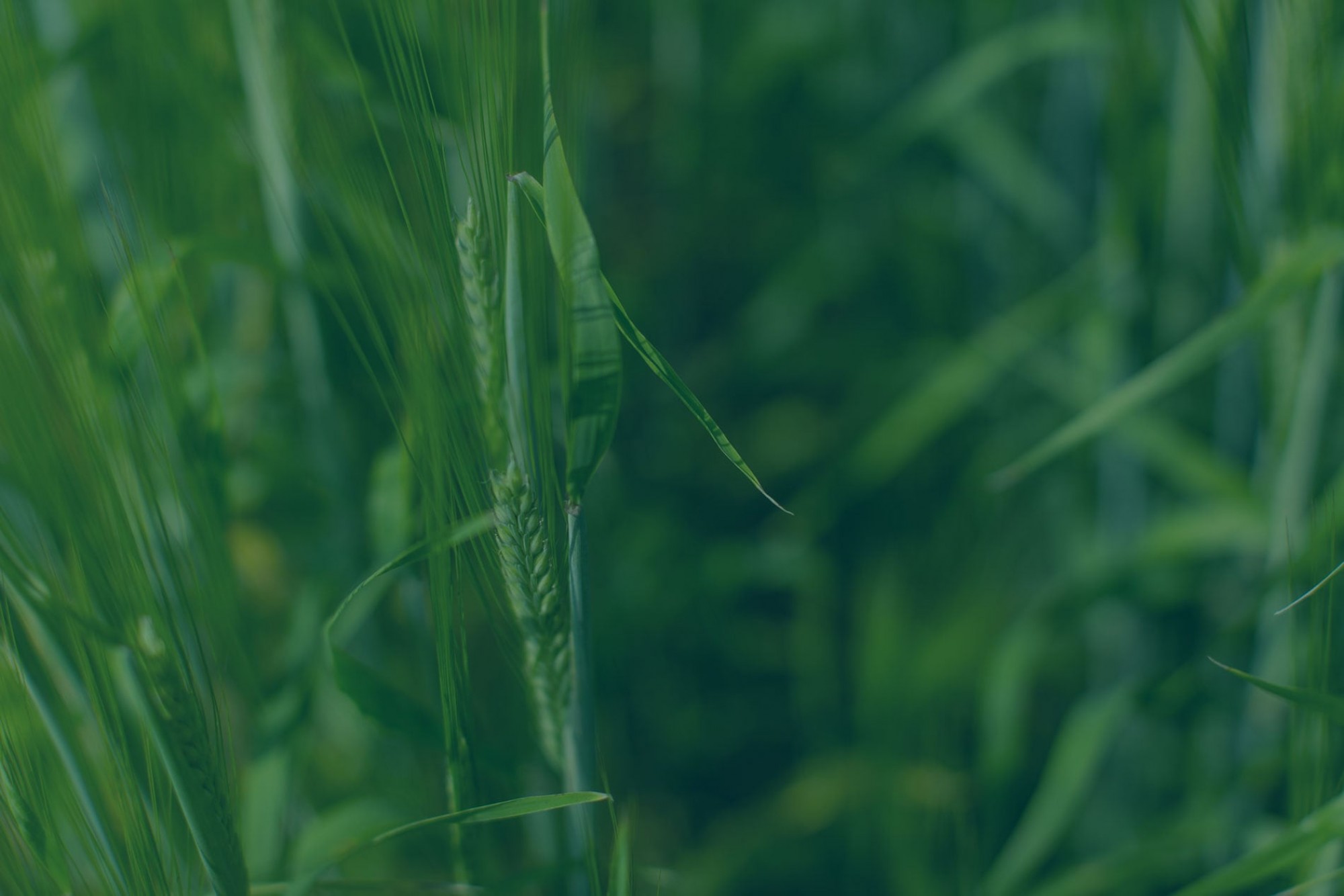Wheat midge parasitism in the Peace River region
By Sheri Strydhorst, PhD, Agronomy Research Specialist, Alberta Wheat and Barley Commissions and Jennifer Otani, M.Sc., Pest Management Scientist, Agriculture and Agri-Food Canada
A recent article by Dufton et al. (2021) in The Canadian Entomologist, examined parasitism of wheat midge (Sitodiplosis mosellana) in the Peace River region of Alberta. The study found that parasitism of this economically damaging insect pest is an important factor in suppressing wheat midge populations.
Wheat midge is an invasive and economically important insect pest of wheat. In Canada, wheat midge emerges in late June or early July over a five-to six-week period (Olfert et al., 1985). Adults lay their eggs on the florets of emerging wheat heads (Olfert et al., 2009). The eggs hatch and the larvae feed on the developing wheat kernels (Doane and Olfert, 2008; Elliott et al., 2009). At the same time the midge are laying eggs, beneficial species of wasp parasitoids seek out and parasitize by laying their eggs within the wheat midge’s eggs (Affolter, 1990; Chavalle et al., 2018; Doane et al., 1989). After feeding, the larvae of wheat midge drop to the soil, bury themselves and form an overwintering cocoon (Lamb et al., 1999; Doane and Olfert, 2008). The following spring, if sufficient heat units and precipitation occur, non-parasitized larvae pupate (Doane et al., 1987; Elliott and Mann, 1996). However, inside the parasitized larva, a parasitoid wasp completes its development and emerges to seek out wheat midge eggs, thereby suppressing viable wheat midge populations.
Parasitism can be an important factor in suppressing wheat midge populations. In Canada and the United States, reported levels of parasitism range from 22 to 63% (Olfert et al., 2003; Shanower, 2005; Knodel and Ganehiarachchi, 2016). Dufton et al., (2021) surveyed commercial wheat fields in the Peace River region of Alberta in 2016 and 2017. In 2016, they found parasitism of wheat midge was between 39-71%. In 2017, parasitism of wheat midge was between 36-71%.
The dominant parasitoid in commercial fields within the Alberta side of the Peace River region was identified as Macroglenes penetrans. In Saskatchewan, average parasitism of wheat midge by Macroglenes penetrans was 62% (Olfert et al., 2003) and it is estimated to control 20-45% of the midge population (Olfert et al., 2009). By comparison in North Dakota, the average parasitism of wheat midge by Macroglenes penetrans was 22% and in Montana, the average parasitism of wheat midge by Macroglenes penetrans was 35% (Knodel and Ganehiarachchi, 2016).
Although Macroglenes penetrans was the dominant parasitoid found in the Peace River region, Dufton et al., (2021) found one instance of a ‘new’ parasitoid, Inostemma walkeri, which is the first report of this parasitoid in North America and the first report of this species parasitizing wheat midge. Inostemma walkeri is a generalist and not specific to wheat midge but it is encouraging to know other natural enemies of wheat midge are present in the Peace River region.
Other wheat midge parasitoids have been identified in various parts of North America, but they were not found by Dufton et al. (2021) in the Peace River region, which may be attributed to the 150 km boreal forest barrier between the Peace River region and cropping areas in central Alberta.
To maintain populations of this critical parasitoid (Macroglenes penetrans), growers and agrologists must:
- Carefully scout when wheat is susceptible to midge
Recognize the importance and value of the economic threshold:
- Economic thresholds rely on in-field counts of midge per wheat head (and never pheromone trap interceptions)
- If a grower opts to spray insecticide at midge populations below the economic threshold, this will jeopardize parasitism for this season and the next since the insecticide application will kill BOTH midge and Macroglenes penetrans who are simultaneously active within the wheat canopy.
- Parasitoids are one of many tools for managing wheat midge because of their role in regulating and suppressing populations. Another tool for managing wheat midge includes planting wheat varieties with genetic resistance to wheat midge. Resistant varieties carry the Sm1 gene but are sold as varietal blends (VB) specifically designed to prevent the build-up of a resistant midge population, prolonging the viability of this form of protection. Learn more about midge tolerant wheat.
- Wheat growers on the Canadian prairies have access to a number of tools that, when used in tandem, provide a truly integrated pest management program targeting wheat midge: (i) parasitism, in conjunction with (ii) good agronomic practices including crop rotations and supporting uniformly healthy stand establishment, (iii) fall sampling to determine wheat midge densities and parasitism levels (i.e., that generates annual forecast maps) enabling the prediction of geographic areas where (iv) midge tolerant cultivars are recommended, plus (v) in-season field scouting and application of the economic thresholds aimed at protecting both quality and yield against wheat midge during the susceptible wheat development stages are all vital tools.
More information related to wheat midge and Macroglenes penetrans and other natural enemies of insect pests can be found at:
Field Heroes “Scouting for beneficials in cereals”
References:
Affolter, F. (1990). Structure and dynamics of the parasitoid complex of the wheat midges Sitodiplosis mosellana (Géhin) and Contarinia tritici (Kirby) Cecidomyiidae. International Institute of Biological Control, Delemont, Switzerland.
Doane, J.F., De Clerck-Floate, R., Arthur, A.P., & Affolter, F. (1989). Description of the life stages of Macroglenes penetrans (Kirby) (Hymenoptera: Chalcidoidea, Pteromalidae), a parasitoid of the wheat midge, Sitodiplosis mosellana (Géhin) (Diptera: Cecidomyiidae). The Canadian Entomologist, 121, 1041–1048.
Doane, J.F. & Olfert, 0.0. (2008) Seasonal development of wheat midge, Sitodiplosis mosellana (Géhin) (Diptera: Cecidomyiidae), in Saskatchewan, Canada. Crop Protection, 27, 951-958.
Doane, J.F., Olfert, 0.0., & Mukerji, M.K. (1987). Extraction precision of sieving and brine flotation for removal of wheat midge, Sitodiplosis mosellana (Diptera: Cecidomyiidae), cocoons and larvae from soil. Journal of Economic Entomology, 80, 268-271.
Dufton, S.V., Laird, R.A., Floate, K.D., & Otani, J.K. (2021). Diversity, rate and distribution of wheat midge parasitism in the Peace River region of Alberta Canada. The Canadian Entomologist. doi:10.4039/tce.2021.7
Elliott, R.H., Mann, L.W., & Olfert, 0.0. (2009). Calendar and degree-day requirements for emergence of adult wheat midge, Sitodiplosis mosellana (Géhin) (Diptera: Cecidomyiidae), in Saskatchewan, Canada. Crop Protection, 28, 588-594.
Elliott, R.H. & Mann, L.W. (1996). Susceptibility of red spring wheat, Triticum aestivum L. cv. Katepwa, during heading and anthesis to damage by wheat midge, Sitodiplosis mosellana (Géhin) (Diptera: Cecidomyiidae). The Canadian Entomologist, 128, 367-375.
Knodel, J.J. & Ganehiarachchi, M. (2016). Integrated pest management of the wheat midge in North Dakota. Extension Service, North Dakota State University, Fargo, North Dakota, United States of America.
Lamb, R.J., Wise, I.L., Olfert, 0.0., Gavloski, J., & Barker, P.S. (1999). Distribution and seasonal abundance of Sitodiplosis mosellana (Diptera: Cecidomyiidae) in spring wheat. The Canadian Entomologist, 131, 387-397.
Olfert, 0.0., Mukerji, M.Y., & Doane, J.F. (1985). Relationship between infestation levels and yield loss caused by wheat midge, Sitodiplosis mosellana (Géhin) (Diptera: Cecidomyiidae), in spring wheat in Saskatchewan. The Canadian Entomologist, 117, 593-598.
Olfert, 0.0., Doane, J.F., & Braun, M.P. (2003). Establishment of Platygaster tuberosula, an introduced parasitoid of the wheat midge, Sitodiplosis mosellana. The Canadian Entomologist, 135, 303-308.
Olfert, 0.0., Elliott, R.H., & Hartley, S. (2009). Non-native insects in agriculture: strategies to manage the economic and environmental impact of wheat midge, Sitodiplosis mosellana, in Saskatchewan. Biological Invasions, 11, 127-133.
Shanower, T.G. (2005). Occurrence of Sitodiplosis mosellana (Diptera: Cecidomyiidae) and its parasitoid, Macroglenes penetrans (Hymenoptera: Platygasteridae), in northeastern Montana. The Canadian Entomologist, 137, 753-755.

